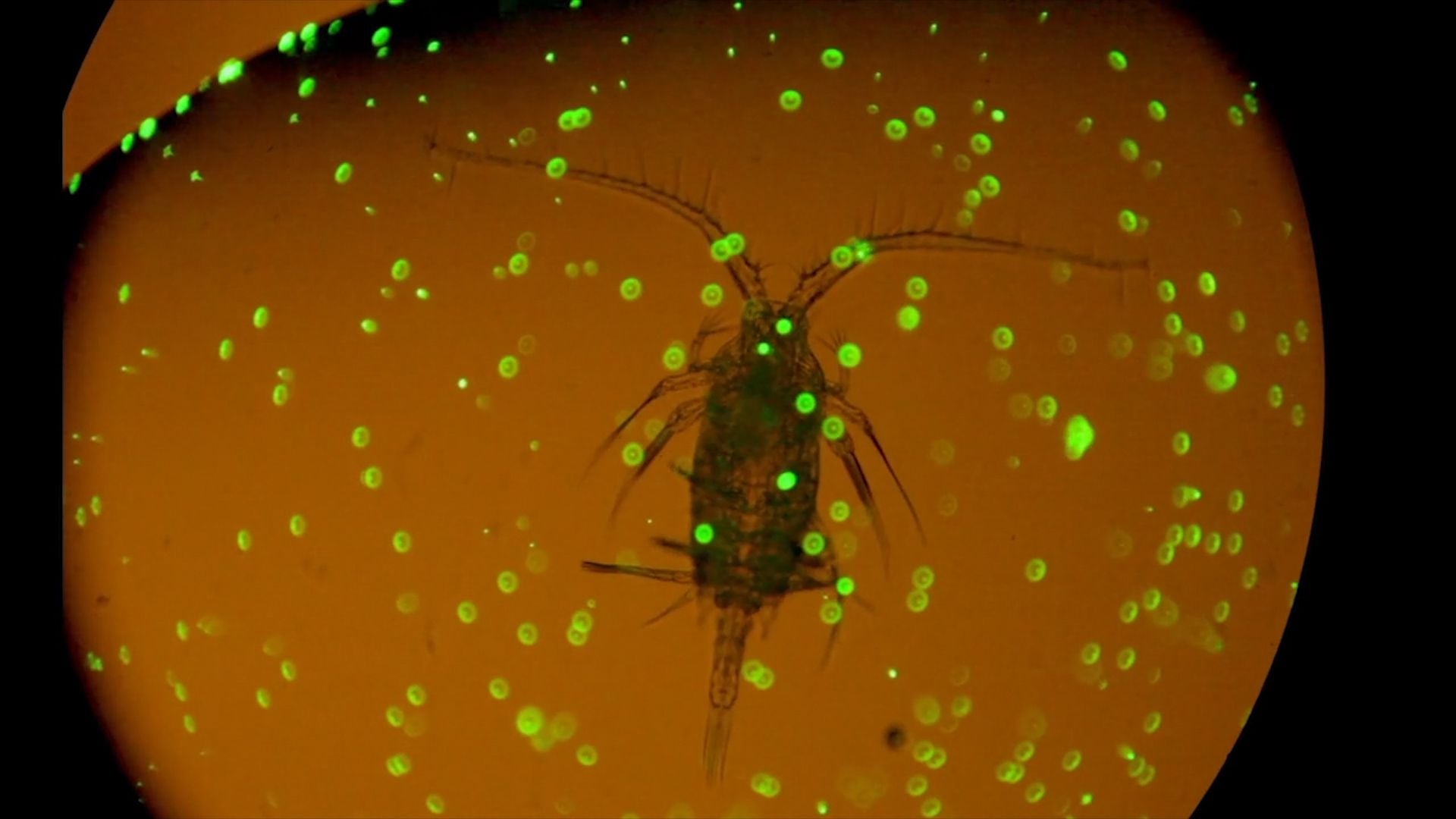Plankton are eating plastic, and that means we’re all probably eating plastic
This post has been updated.


This post has been updated.
These are the first images that show how microscopic particles of plastic, or microplastics, can become food for plankton:
Plankton are tiny organisms that live in water and provide an important food source for other aquatic creatures like fish and whales. When plankton consume toxic plastic debris, it is likely that the animals higher up the food chain will also be contaminated.
In the video above, the U.K.-based production team, Five Films, headed by environmental documentarian Verity White, captured how zooplankton, a species of plankton, accidentally eat plastic.
Zooplankton, which vary in size from 200 millimeters (about 8 inches) to 2 micrometers (or 0.0002 millimeters), usually feast on algae by kicking their legs to agitate the water and then siphoning the water and algae into their mouths. For the film, White and her team put the plankton under a microscope and used fluorescent plastic pellets to observe how the toxic synthetics were imbibed and processed by the plankton.
White told Quartz, “No one knows the exact concentrations of microplastics in the ocean.” She said that the concentration they used in the film were high to show that, at least at that concentration, plastics are ingested indiscriminately by plankton.
White created the short film, titled “Ren Kyst – got a spare afternoon?” for the Ren Kyst project, an environmentalist movement that seeks to “clean up close to 40 coastline locations” in northern Norway. The film recently won the Atkins CIWEM Environmental Film of the Year. Atkins CIWEM holds the competition “to enhance our understanding of the causes, consequences and solutions to climate change and social inequality.”